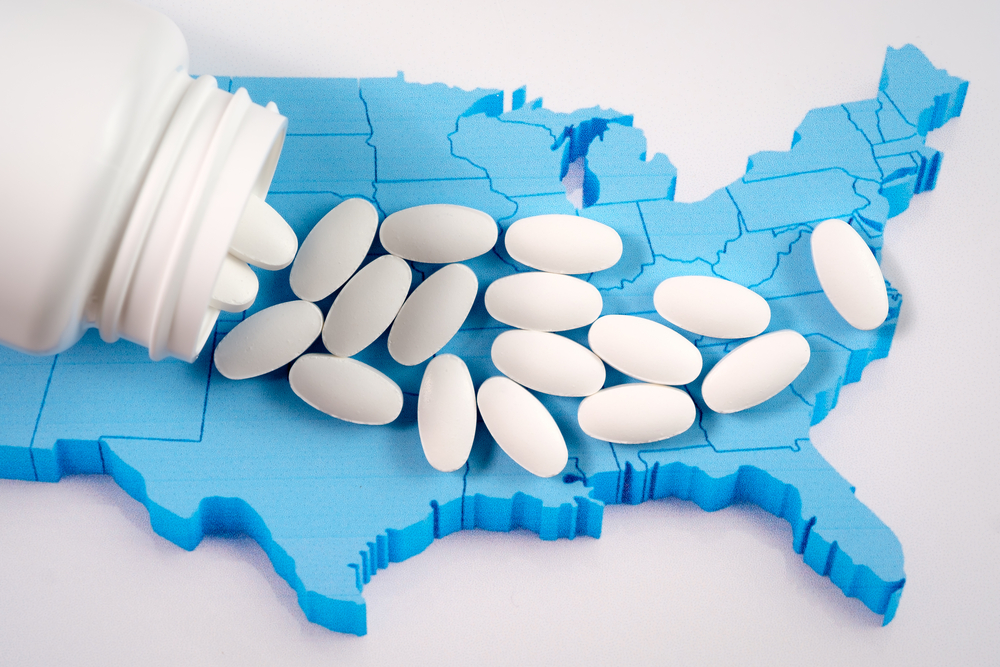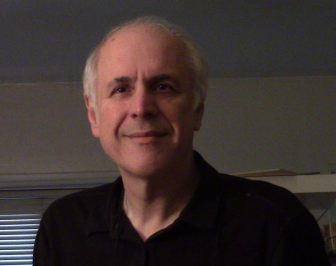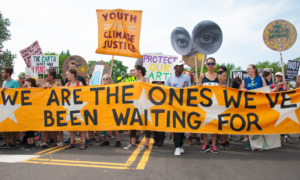
Scotyard/Shutterstock
.
At first glance, a “research brief” issued in March by the U.S. Department of Health and Human Services concerning opioids and child welfare seems merely to belabor the obvious: Where there are said to be more severe problems with drug abuse, it often happens that more children are taken from their homes.
Although the authors themselves caution that “the analysis cannot identify a causal relationship,” that hasn’t stopped some from seizing on the report to promote the usual agenda from America’s foster care-industrial complex: Take away more kids and spend more money on foster care.

Richard Wexler
But a closer look and the research brief tells another story. It illustrates that the increase in foster care placements is not a result of the opioid epidemic — rather it’s the result of something I’ve discussed before: child welfare’s typical, knee-jerk take-the-child-and-run response to the opioid epidemic.
Indeed, the most important takeaway from the research brief is that child welfare policy on this issue lives at the intersection of ignorance and arrogance and that is enormously dangerous to children.
To understand what the HHS report really reveals, it’s important to understand three key points about substance abuse and child welfare.
- The alternative to leaving children with parents who have substance abuse issues — foster care — usually is far worse for the children. This is not just the case for foster children in general. Research from the last great “drug plague,” crack cocaine, found that even infants born with cocaine in their systems typically developed better when left with birth mothers able to care for them than they did when placed in foster care.
- Not every parent who uses drugs is overdosing on heroin in the car while driving the kids to school or running a meth lab in the basement. Some parents can function even with a drug problem. Indeed, social worker Nico’Lee Biddle recently wrote movingly in Teen Vogue about two such people — her own parents — and why she should have been allowed to stay with them instead of being consigned to foster care.
- When the problem is addiction, the best first option is drug treatment. And when the problem is addiction to opioids, the most effective solutions include medication-assisted treatment. That means the parents are prescribed medication such as methadone or buprenorphine, drugs that curb cravings for opioids and ease withdrawal. As the HHS report itself notes, when this is combined with “counseling and behavioral therapies” it is far more effective than counseling alone.
With that context, let’s consider the report:
The HHS report combined statistical data with the subjective perceptions of people in the child welfare system and those involved in substance abuse treatment. But, for child welfare, the interviews did not appear to include current or former foster children, birth parents or their lawyers. Instead, it appears to have been dominated by child protective services workers and supervisors, prosecutors and judges.
The problem with that is it contributes to the hype and hysteria surrounding the issue, something I’ll discuss below. The upside is it offers us a glimpse into the mindset of some of the people who dominate the system in some parts of the country — and that mindset is ugly.
Consider the very first sentence in the section headed “Challenges of Treatment”: “Assessment of parents’ substance use was often cursory and lagged behind placement decisions.” Translation: We take the children first and ask questions later.
Medication-assisted treatment
Then there’s the attitude toward medication-assisted treatment (MAT). Many child welfare professionals didn’t understand it or know how it works. Worse, although these views were “not universally held,” the report found that:
“Many professionals we interviewed expressed skepticism about the use of methadone or buprenorphine for extended periods and opined that clients receiving MAT “were simply trading one addiction for another.” We also heard about substance use treatment programs that refused clients on methadone or buprenorphine because of their view that “you’re not actually in recovery until you’re off medication.” This view was shared by some judges and caseworkers as well.”
This suggests that these “professionals” don’t really believe drug abuse is a disease at all. They see it as a moral failing. Therefore simply taking medication that allows one to be a good parent is not enough. Unless the parent quits in exactly the way the censorious professionals want them to quit, they are not worthy of keeping their children.
I wonder how many of these “professionals” are, themselves, among a group I expect to join myself in the next few years: the 25 million Americans taking statins — medicines we’ll have to take for the rest of their lives — because we’re too weak-willed to break our “addiction” to foods that raise cholesterol? What a bunch of spineless moral failures we must be!
So what the interviews summarized really give us is more evidence that child welfare is a parent punishment system, not a child protection system.
Combine that arrogance with ignorance about what foster care does to children — including substance-exposed infants — and it’s no surprise that the HHS report also found this:
“In many sites, the child welfare staff at the nexus of these issues believe that cases involving serious substance misuse or disorders overwhelmingly require the removal of children from the home and are very likely to end in termination of parental rights. The strong inclination in many places is to remove children from the home in cases with significant parental substance use, often regardless of other factors. This view is particularly prevalent among judges, district attorneys, and court personnel, especially regarding substance-exposed newborns.”
Scope of problem
That, in turn, explains another important, if obvious, finding: There is a desperate shortage of treatment, especially what the report calls “family friendly” treatment. According to the report:
“Because of widespread treatment shortages, treatment matching (that is, referring each client to a specific treatment program that matches the client’s therapeutic needs) was virtually nonexistent in the communities that participated in the study. Clients received available services, whatever they may be. … The lack of timely, appropriate treatment set families up for failure.”
Of course the child welfare establishment blames that on lack of money. But there’s always money for more foster care — just as there’s always money for more jails. What we don’t fund is help for people we hate; and the hatred of these child welfare “professionals” for families with substance use problems oozes through the findings of the report.
This hatred also taints many of the report’s findings about the scope of the problem.
The report authors accept at face value claims by the “professionals” they interviewed that the current drug plague is worse than any other drug plague.
There are several problems with this:
First, the authors only talked to professionals in places with unusually high rates of substance abuse. Second, if you follow child welfare long enough you know that the people in the system always claim that the current drug plague is the Worst. Drug plague. Ever. And third, given the high turnover among people who work in child welfare, it’s hard to believe that many of those interviewed were even in the field when crack cocaine hit more than 30 years ago — so it’s hard to see how they can reliably compare the effects of the crack plague and the opioid plague opioids.
The report’s own conclusion that “higher indicators of substance abuse correspond to more complex and severe child welfare cases” is based solely on the fact that “higher indicators of substance abuse predict a greater proportion of children with maltreatment reports that are removed from their homes.”
But the report itself has established that caseworkers rush to take away children in these cases without doing meaningful assessments — and they admit to a strong bias toward removal. So the correlation tells us only that, if you say the magic words “drug abuse,” the people in power in many child welfare systems are more likely to take the child and run.
The suggestion at the heart of the report, that rising rates of drug addiction is the cause of increased foster care, is questionable for similar reasons. The attitudes of those questioned suggest that the real cause of the increase is the fact that so many professionals hate parents with substance abuse problems and resist alternatives to foster care.
This is further indicted by the fact that the correlation is far from universal. Another HHS report includes a map, on page 4 showing how often rates of drug abuse and rates of foster care correlate — and don’t correlate. The dark blue counties are places where the number of children taken from their homes was above the national median but drug abuse was not exceptionally high, using the report’s measure of choice. The orange counties are places where drug abuse was high, but entries into foster care were not above the median.
So are we looking at a map of the actual extent to which substance abuse requires child removal – or are we looking at a map of caseworker and court biases? If, as I believe, it’s the latter, it also gives reason for hope: It means there may be places across the country where child welfare professionals don’t share the deep biases and vile attitudes that the HHS researchers found.
Richard Wexler is executive director of the National Coalition for Child Protection Reform.































